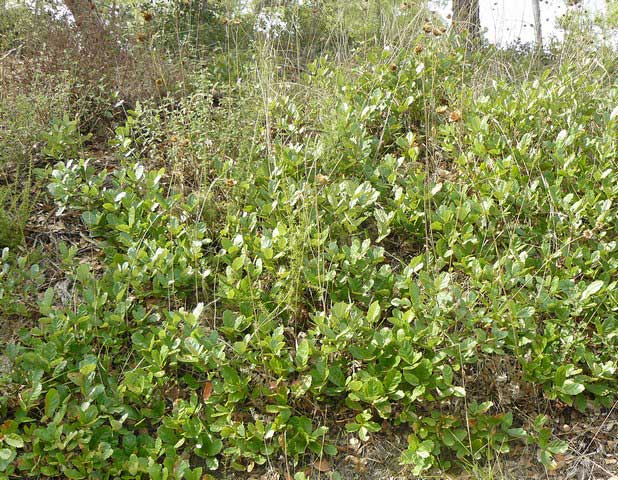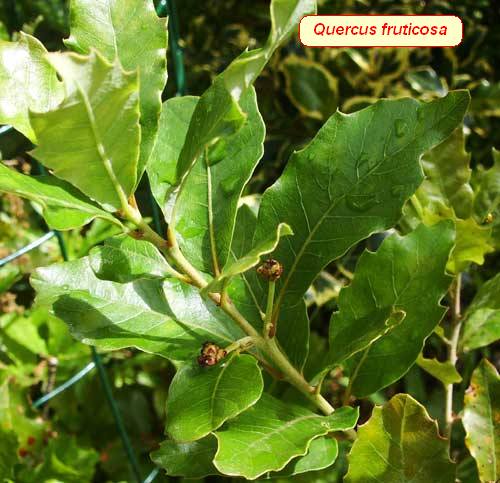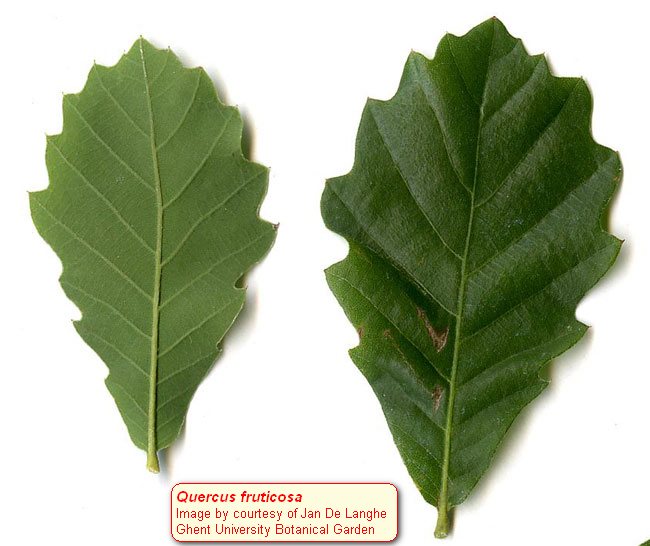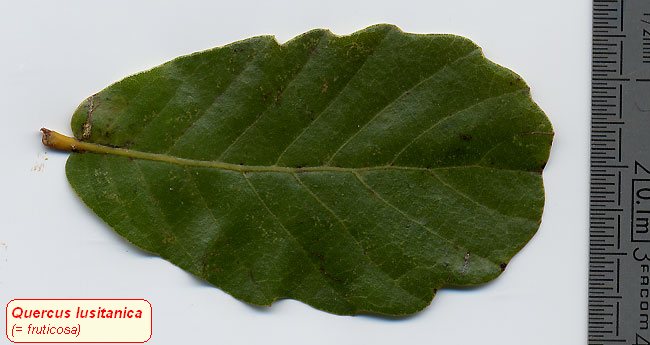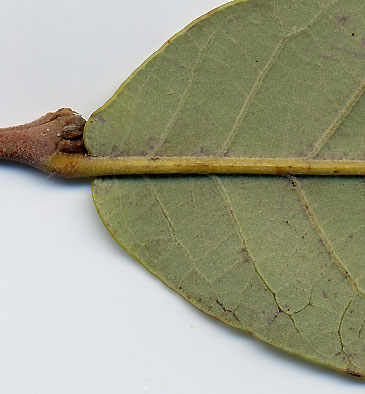| Quercus fruticosa | |
| Author | Brot. 1805 Fl. Lusit. 2: 31 |
| Synonyms |
Q.lusitanica Lam. 1785 Encycl. 1: 719 (nomen ambiguum), not Webb. nor
Boiss. |
| Local names | |
| Range | Southwest
Spain; Central and South Portugal; Morocco; |
| Growth habit | usually low shrub to 0.3 high, reaching rarely 2-3 m; spreading crown; tortuous branches; |
| Leaves | 3-6
cm long x 1.2-3.5; semi-evergreen; leathery; oboval-oblong or oboval-elliptic;
apex obtuse; base rounded or cordate; margin seldom entire or dentate
in the apical 2/3 or half (4-6 pairs of teeth curved upward); the 1/3
basal (or often more) is always entire, which is an interesting feature
to identify this species and its hybrids; lustrous above with solitary,
multiradiate and stellate hairs, becoming glabrous; whitish, somewhat
glaucous, densely hairy beneath (multiradiate and fascicled hairs), especially
along veins; 5-9 parallel vein pairs; very short petiole, less than 5
mm long, most often pubescent; |
| Flowers | April-May;
|
| Fruits | small
oblong acorn to 1.5 cm long and 1 cm wide, stalkless or on a short, hairy
peduncle; cup 1.2-1.6 cm in diameter, 0.8 cm high, covered with narrow
convex scales; maturing in 1 year; |
|
Bark, twigs and |
bark
rough, scaly; twig becoming glabrous, red brown, shiny; |
| Hardiness zone, habitat | not quite hardy; withstands -10°C; prefers moist soils; |
| Miscellaneous |
--
A. Camus : tome 2, p. 168, n° 151; --
The specific name "valentina" has been applied to various
species :
|
| Subspecies and varieties |
|
| Pictures |
|
